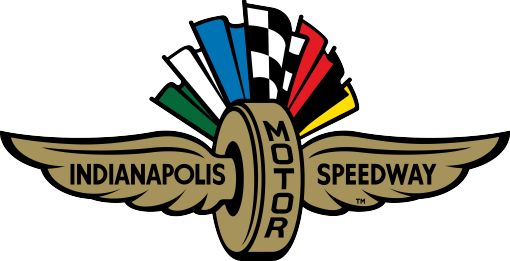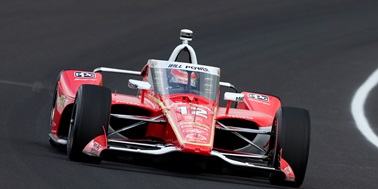There will, quite simply, never be another career to match that of A.J. Foyt.
In terms of sheer longevity, the amazing, charismatic Texan set records that surely will never be broken.
The first driver to win the Indianapolis 500 for a fourth time (1977), Foyt competed in the "500" over a truly remarkable period of 35 consecutive years (between 1958 and 1992).
And that's not just 35 starts, but 35 in a row.
Consider, for instance, that the driver making his first "500" start in 2020 who aspires to break Foyt's record would have to go through the trials and tribulations of qualifying for every "500" between now and 2055 ... without missing a single one. And he or she would be doing so with considerably more safety features than Foyt had at his disposal when he began―a major understatement.
When he qualified for his first "500" in a rigid, unforgiving, front-engined, truck-like "roadster" in 1958, Foyt elected not to use the uniform he had hanging in his locker, awaiting Race Day, but rather a Dean Van Lines T-shirt. While the wearing of fire-retardant uniforms had been strongly recommended for some time, it would be another year before it would become mandatory. The typical process for the treatment, incidentally, was that uniforms would be dipped in a mixture of borax crystals and water (usually in a 55-gallon drum in the garage area), stirred with a stick, and then placed on a clothes hanger to dry.
Of the 32 drivers who lined up along with Foyt for his "500" debut that May 30, no less than 13 would lose their lives in a race car during those perilous times, including four of the first six finishers. Five of the 13 would be gone before another "500" could be run. The fact that so many others had their careers either terminated or at least interrupted due to injury, and more than a few had to suffer through a dismal month of May which resulted in them "missing the show," only helps to underscore the magnitude of Foyt's accomplishment. There were no guaranteed spots, and no "provisionals" for past champions. Year after year, it was back to "square one," and the only way to start in the race was to be driving one of the fastest 33 cars in qualifications.
The driver hoping to top Foyt's record of laps/miles turned during "500" competition would have quite a task at hand. The figure to aim for is 4,909 laps/12,272.5 miles. Among those still active, Helio Castroneves stands the best chance mathematically, although he would need another 1,311 laps. That would take him at least seven years, while the driver starting from scratch would be at least 25 years away, providing he or she were to enjoy an almost perfect finishing record for the next quarter of a century.
In USAC National Championship competition, Foyt was the most successful driver ever, with 67 wins between 1960 and 1979, over such diversified venues as 1-mile dirt tracks, flat paved ovals, steeply banked "superspeedways" and road courses. He also won 42 USAC stock car races in similar fashion, along with 28 sprint car races and 20 midget car events on short-track ovals.
He ventured into other areas and famously shared the winning Ford GT 40 Mk IV with Dan Gurney in the 1967 version of the 24 Hours of Le Mans, just three weeks after winning his third "500." He also won seven major events with NASCAR, namely the Firecracker 400 at Daytona in 1964 and 1965, the 500-miler on the road course at Riverside, California, in 1970, the Ontario (California) 500 in 1970 and 1971, the Atlanta 500 in 1971 and the Daytona 500 in 1972. He also shared the winning car in the 24 Hours of Daytona in 1983 and 1985, following up the latter, less than two months later, with the 12 Hours of Sebring, as well.
The 1983 Daytona win came at a time when he was being given very little credit for his proficiency on road courses. In fact, French driver Bob Wollek was furious and quite outspoken when owner/driver Preston Henn elected to have Foyt drive a segment during the rain instead of selecting either himself or fellow countryman Claude Ballot-Lena. Gum-chewing Foyt responded by turning the fastest lap of the entire race ... in the rain. Happily, Wollek saw Foyt in a different light after that eye-opener and shared the winning car with him again two years later, both at Daytona (along with Al Unser and Belgian driver Thierry Boutsen) and at Sebring.
For many, however, Foyt at his absolute best was on a dirt track. Indeed, it was a sight to behold. Leaning back in the cockpit, slightly over to the right, his left arm usually fully extended and his trademark red bandana contrasting against the pure white of his open-face helmet, he was totally in control. He was, in the eyes of a legion of followers, clearly "The Man." While other drivers would tend to fight the wheel through the turns, Foyt, providing the surface was relatively smooth, seemed to be able to negotiate them with a minimum of effort. Having cranked the car sideways into Turn 1, he would give the impression of being able to hold it all the way through to the exit of Turn 2 without appearing to have moved the wheel at all. If the track was rough, well, he could handle that too, sometimes preferring to drive – heaven forbid – without gloves.
During practice, or between heats at a short-track event, he was like a tiger on the prowl, constantly circulating the car, bareheaded, carrying a wrench and pushing underlings to one side, convinced that the best way to get something done properly was to do it himself.
Perhaps the most colorful and inspiring stories of Foyt's amazing career are drawn from instances in which he overcame adversity. Many a time, he would struggle not to wince as he climbed into a cockpit, doing his best to hide pain suffered from burns or some other injury.
While he is officially credited with seven NASCAR wins, there is one more worthy of consideration. In the closing laps of the January 1965 Riverside 500, he swerved off course in his Wood Brothers Ford in order to avoid another car, plunged down an embankment, and then cartwheeled several times before landing upside down with a severely injured back. Just a few weeks later, he was at Atlanta, looking pale and drawn, and hardly expected to set the world on fire. As teammate to Marvin Panch, the understanding was that he would hang in as long as possible, and that should Panch happen to drop out, Foyt would come in to hand over. As it turned out, Foyt retired with throttle linkage problems at Lap 91, Panch came in suffering from neck cramps, and Foyt took over for him.
The record books show that Panch won the race. What they do not show is that Foyt took over the leading car on the 212th of 334 laps and was never headed thereafter.
Five months later, on Aug. 21, came what may well have been Foyt's finest moment ever.
In 1964, he had dominated the USAC National Championship circuit, winning the first seven races in succession, including the "500." He ended up claiming 10 of the 13 points-paying events, being eliminated by mechanical trouble in the only three he did not win. While all the wins came in either his dirt car or front-engine "roadster," two of the three retirements had taken place in rear-engine cars.
Of the first 10 races in 1965, all on paved tracks, he had managed precisely one first, one second and one fourth, with the other seven races all ending in retirement. The faithful "roadster" had remained in the garage since the previous season, and all 10 starts had come in rear-engine cars. At the Illinois State Fairgrounds on Saturday, Aug. 21, the picture brightened. It was the first race of the year on dirt, and Foyt won. As was the situation for many years, the USAC contingent then loaded up and towed northeast to Milwaukee for the following day's 200-miler on the paved mile oval.
At some point between Saturday night and early Sunday morning, Foyt received word that trouble had been encountered with his rear-engine car in Indianapolis and that it would not be ready in time to make the journey.
It was going to take more than that to stop him. The assemblage on the Milwaukee infield could hardly believe its eyes. While crews were unloading sleek, low-sitting rear-engined cars for standout drivers like Mario Andretti, Dan Gurney, Rodger Ward, Lloyd Ruby, Roger McCluskey, Joe Leonard, Johnny Rutherford and others, Foyt arrived towing his dirt car. A huge crowd gathered round in disbelief as he began supervising the hosing off of the previous day's Springfield mud, then making changes to the suspension for the car to run on pavement.
Surely he couldn't be serious, and yet, when qualifying was completed, Foyt had the dirt car on the pole.
The roar from the crowd during that epic run was perhaps the loudest ever heard at the track.
Because the fuel tank was designed to hold only enough for 100 miles on a dirt track, it was going to be necessary for Foyt to make at least one stop. This he did, at Lap 157, during which time he also changed a blistered right rear tire. Gordon Johncock, who was driving a rear-engine car for the first time in his life, went non-stop and won the race, while Foyt, to the amazement of everyone, was able to edge out Ruby for second.
Although Foyt claims no memory of the following story, crew members swear it is true. As he returned to the track following the stop, officials noted that the spring-loaded fuel cap had failed to close and that it was sticking straight up in the air.
"Fuel cap," read the frantic chalked message on the pit board.
Foyt was at a loss to understand for a couple of laps until he saw his crew pointing, in animated fashion, to directly behind him. He reached behind his head with his right hand and felt around for a moment until the mystery was solved. Steering with his left hand, he pushed down on the spring-loaded cap with his right until the cap mercifully clicked into place.
Those who were there that day will never forget the sight of Foyt coming through the turns, his waist about level with the tops of the heads of Andretti, Ward, Gurney and company. More often than not, he would be nonchalantly steering with his left hand and making adjustments with his right, the "adjustments" on a couple of occasions involving the repositioning of his goggles.
The tempestuous Foyt was normally never satisfied with second or third, and even then, there have been numerous occasions on which he won and was upset over something which had occurred during the event. But this day was different. When he came up to greet Johncock, grinning from ear to ear, wearing a straw cowboy hat and chewing gum faster than ever, one could just see that he knew he was at his very best.
For quite some time, his contemporaries had been calling him "Super-Tex."
The name fit him like a glove.




